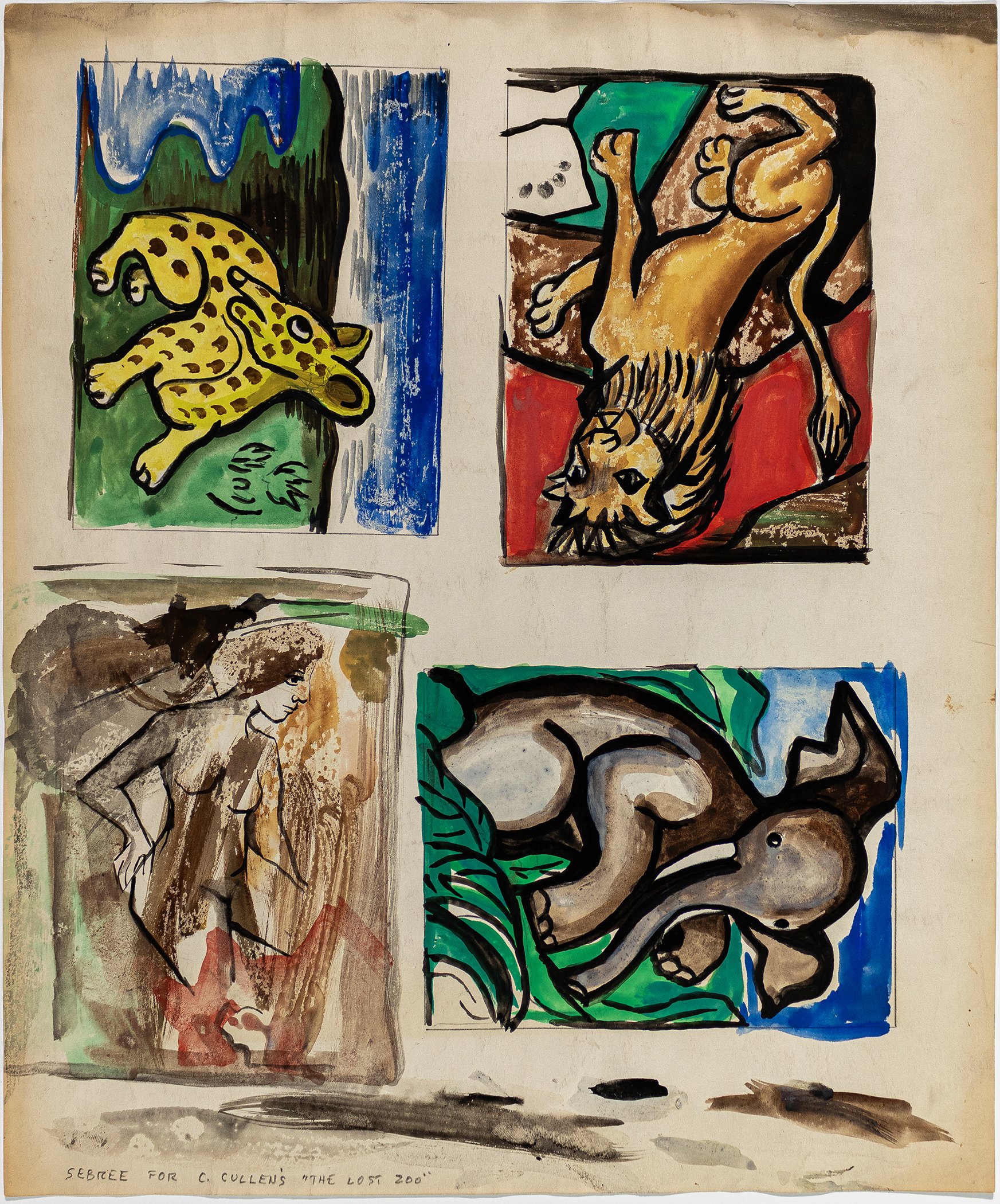Charles Sebree (1914-1985)
1938
oil on canvas
36 x 25 inches
signed and dated
Charles Sebree was born and raised in Kentucky until the age of ten, when he and his mother moved north to Chicago. By the age of 14 he was carving out his own rough existence in the midst of the Great Depression. At this time, the Renaissance Society of the University of Chicago featured his drawing, Seated Boy on the cover of their magazine. He went on to train formally at the Chicago School of Design and the Art Institute of Chicago and used his interests in European modernism and African sculpture to forge his own individual style; one which evoked a mystical quality similar to old world Byzantine enamels and Russian icon paintings. He was the only African American artist represented by Katherine Kuh among a group which consisted of a majority of leading European modernists.
Between 1936 and 1938 Sebree worked for the WPA easel division, participated in the South Side Community Arts Center, and was involved with the Cube Theater. He maintained a strong interest in the theater due to his friendship with Katherine Dunham. Guided by her influence, he explored set and costume design, theatrical production, writing, and dance, while continuing to paint. Sebree was also close with a group of bohemian artists from Chicago and Wisconsin, which included Magic Realist painters Gertrude Abercrombie, John Pratt, John Wilde, Karl Priebe, and others. Sebree began writing plays in earnest in 1949- his most well received work was Mrs. Patterson, which opened on Broadway in 1954 starring none other than Eartha Kitt. In addition to all of his creative endeavors, Sebree also collaborated with Harlem Renaissance author Countee Cullen by illustrating his narrative poem, The Lost Zoo (A Rhyme for the Young But Not Too Young).
The Lost Zoo includes poems with beautiful color drawings of animals. It is a very charming fantasy told in verse except for its prologue and epilogue which are in prose. The title page says it was written by Christopher Cat and Countee P. Cullen. The prologue explains that Chris is Mr. Cullen's pet cat.
“Some of the children I was teaching had read of my work and wanted to become better acquainted with it. However, most of it was too far over their heads for them to be able to appreciate it. They asked me to write something that they could understand. The Lost Zoo is the result."
1940
watercolor and ink on paper
15 x 12-1/2 inches
signed in pencil, "by Sebree"
These illustrations are listed in Afro American Artists: A Bio-Bibliographical Directory by Theresa Cederholm as known works by the artist.



